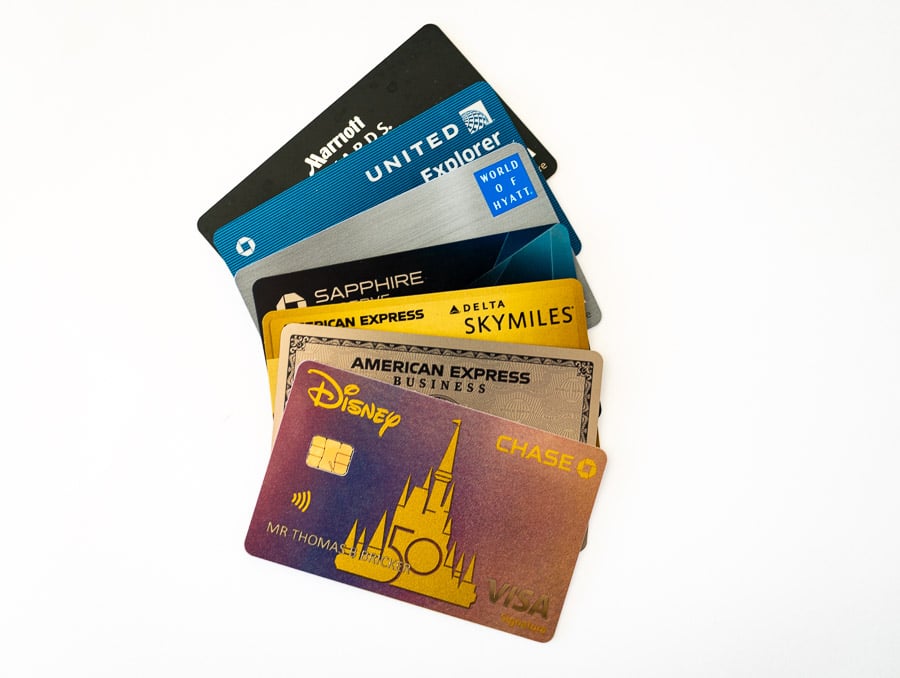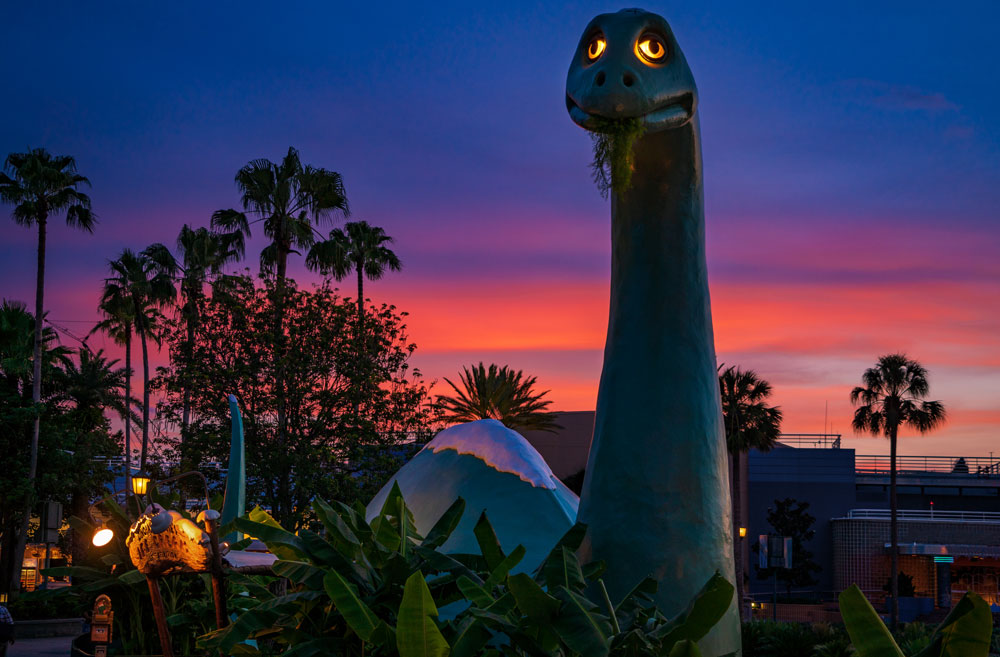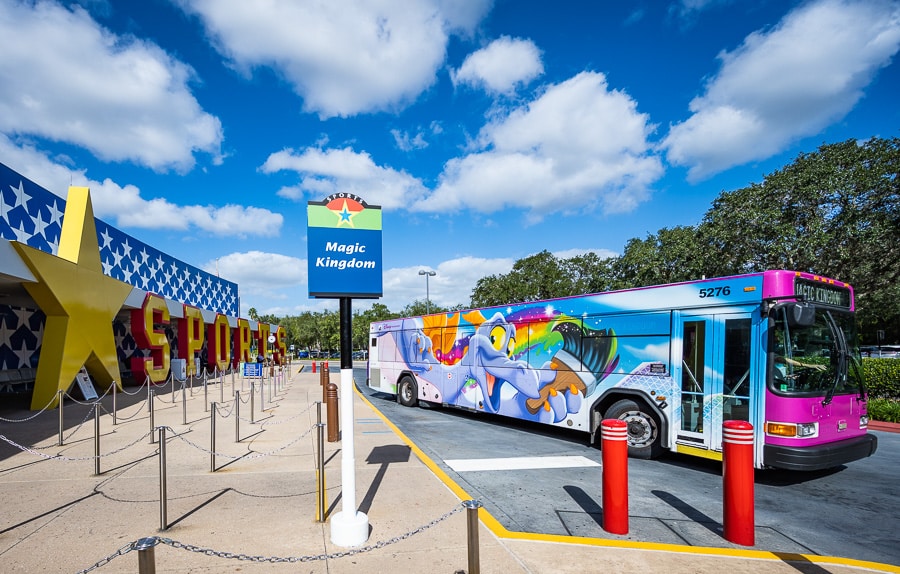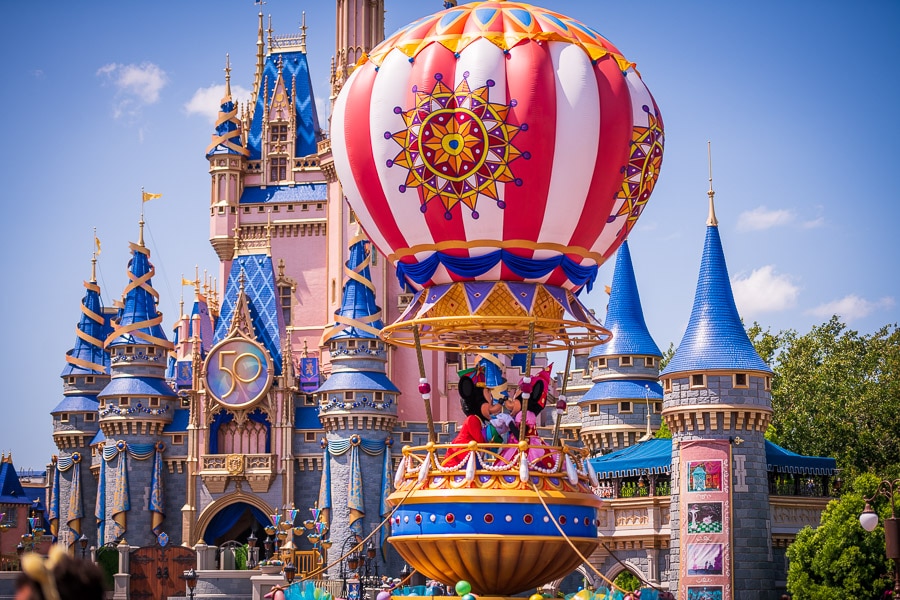Consumer Spending Is Slowing: Will It Hit Disney World?
The exhaustion of pent-up demand at Walt Disney World has been a hot topic for months, with potential impacts to discounts, crowd levels, return of Dining Plan, and pullback on nickel & diming and price increases. Now, consumer spending is starting to slow and the engine of the U.S. economy is stalling. This post covers what’s happening in the bigger picture and what that means for Walt Disney World.
In part, this is not a new conversation. We published What Does Walt Disney World Do During a Recession? last summer when the country entered a technical recession. Even beyond that, every single new discount release has included discussion about pent-up demand fizzling out, inflation on necessities resulting in reductions to discretionary spending, and depleted household savings and rising debt levels.
Our prediction has been that consumers would return to being more cost-conscious and price sensitive, and things will normalize at Walt Disney World, as those dynamics play out. Our short and sweet answer as to what that means in this context is that Walt Disney World will end up offering better discounts, bringing back familiar fan favorites. What follows is the why of that, starting with the broader economic environment.
In short, consumer spending is sputtering. Retail sales fell 1.1% in December, reflecting tepid consumer demand even during the busy holiday shopping season. That wasn’t an isolated occurrence or anomaly–retail purchases have fallen in three of the past four months. That followed consecutive quarters during which retailers like Walmart and Target raised red flags about weaker forward-looking demand.
Spending on services was flat in December when adjusted for inflation, matching November. Services outlays were supported by housing and utilities, air travel, and recreation–as Americans cut spending at restaurants and bars. This resulted in the worst monthly reading in nearly a year. Consumers pushed back on price hikes in particular, which is a positive for fighting inflation.
This is a sharp contrast from the prior year-plus when Americans lifted the economy out of its pandemic downturn starting in the second half of 2020. That helped the United States avoid what many economists worried would be a prolonged recession, as consumer spending on goods–followed by services–fueled economic growth.
Even as inflation accelerated, Americans kept spending in the last year. Consumer spending strength was aided by government stimulus, flush savings accounts, and cheap credit. Despite four-decade-high inflation last year, consumers continued on undeterred. Americans actually outspent inflation–through the first 9 months of 2022, consumer spending growth exceeded price increases by about 2%.
That tides have turned, and spending is slowing while inflation remains elevated–in part because inflation is still running hot. In December, the share of monthly income Americans set aside for savings was only 3.4%, down from 7.5% a year earlier and from a record high in Spring 2020 when the savings rate spiked to over 30%. Back then, many Americans were stuck at home and not spending on travel, leisure, restaurants, or other services, bolstering that household savings rate to record levels.
For the sake of a more apples to apples comparison, the savings rate was 8.8% back in 2019. It has been below that for over a year at this point, and continues to decrease.
As the personal savings rate sank near an all-time low, credit card balances jumped 15% year over year, according to the latest quarterly report from the Federal Reserve Bank of New York. “With prices more than 8% higher than they were a year ago, it is perhaps unsurprising that balances are increasing,” Fed researchers wrote.
Credit card balances were up $38 billion from the previous quarter, the largest in more than twenty years. According to the Fed, the real test will be whether borrowers will be able to continue to make the payments on their credit cards. Already, delinquency rates have begun increasing–albeit from the unusually low levels during the pandemic as household savings soared (see above).
On top of this, fewer credit cardholders are paying off their balances in full each month. Approximately 46% now carry credit card debt from month to month, up from 39% last year.
The average credit card interest rate is now 19.6%, which is an all-time high. This comes after rising at the steepest annual pace ever, in step with the Federal Reserve’s interest rate hikes to combat inflation. Although the amount of rate hikes is likely to decelerate, this trend is unlikely to reverse anytime soon.
The Federal Reserve just raised the central bank’s benchmark rate, effective February 2, 2023. That brings the rate to between 4.5% and 4.75%, from near zero at the start of last year. The Fed’s borrowing rate is projected to rise another three-quarters of a percentage point over the course of 2023, hitting a 17-year high of between 5.00% and 5.25% by the end of the year. (Assuming no rate cuts later in the year, which some analysts are already forecasting in the second half.)
With the Federal Reserve’s commitment to keep raising its benchmark rate until progress is made in fighting inflation, credit card interest rates will easily be over 20% in the coming months. This will only exacerbate household debt levels and further reduce savings, especially if Americans continue having to spend more on necessities like groceries.
Consumer spending accounts for roughly 70% of the economy. A downshifting consumer is the key reason that economists put the probability of a recession in the next 12 months somewhere between 60% and 70%. However, many economists believe that the U.S. might avoid a recession entirely if spending patterns stabilize and the Fed is able to engineer a soft landing.
The increases are gradually slowing down consumer spending, but it might take months before the Fed’s goal of cooling the economy is fully realized. That’s because there’s some degree of lag between rate hikes and the curbing of economic activity and lowering inflation. Many investors think the lag is long, which is precisely why they predict the Fed will cut rates later this year and through 2024. These investors believe the Fed has already raised rates to levels likely to cause a recession.
There are other variables at play. Although unemployment is trending at a half-century low, big companies including Goldman Sachs, Microsoft, Meta/Facebook, Twitter, Netflix, Amazon, and motr have culled their workforces to cut costs. Layoffs aren’t the only means of reducing staffing–others, like Disney, have instituted hiring freezes or issued return to office mandates.
With that said, jobs have remained abundant and wages have continued to rise. Unemployment was only 3.5% in December, and hourly wages were up 4.6% year-over-year. Equally as important, there were are over 10 million unfilled jobs and more open positions than unemployed individuals, according to the Labor Department. Even with white collar layoffs, this dynamic is unlikely to change as Baby Boomers continue leaving the workforce.
That’s not to paint an overly-rosy picture of the labor market and employees’ strength. The Labor Department also reports signs of weakness, including employers dropping temporary workers following the holidays at a faster-than-normal rate, people who lose their jobs taking longer to find new ones, and the average number of hours worked a week declining for two straight months.
Additionally, tens of millions of Americans are set to start or resume making payments on student loans later this year. Payments have been frozen since March 2020, and are scheduled to begin again 60 days after litigation around debt cancellation is resolved or the program is implemented.
Many taxpayers will get smaller refunds when they file their returns in the coming months because Congress didn’t extend breaks put in place during the pandemic. Of particular relevance is the expiration of the enhanced child tax credit, which could have outsized impact on Walt Disney World’s core demographic of families with kids.
To that point, let’s turn to that–after all, this is a Disney blog and not Bloomberg. Let’s start with consumer spending, since that’s the crux of this conversation. The surge in savings plus subsequent stimulus and rise in consumer spending is in large part what drove the ~40% increases in per guest spending at Walt Disney World over the last year-plus.
One survey found many families are willing to put at least some of their Disney vacation on a credit card, with 18% of respondents stating that they went into debt to pay for their Walt Disney World vacation last year. Parents with children younger than 18 are the most likely to incur debt for Walt Disney World, at 30%.
The degree to which debt is incurred for Walt Disney World vacations is actually below average for all categories of spending. As a whole, approximately 35% of all U.S. adults carry credit card debt from month to month. While there’s a qualitative difference between incurring debt to buy necessities like eggs as opposed to luxuries like Starcruiser, it’s still somewhat surprising that the number is that low for Walt Disney World trips, specifically.
More than anything else, visitors under-budgeted for food costs when racking up debt at Disney. While many consumers expected to go incur credit card debt ahead of their Walt Disney World vacation, surprise expenses accounted for the bulk of that.
Respondents who’ve gone into debt to pay for Walt Disney World trips indicated that food & beverage costs were the category that was most likely to be more expensive than expected, at 56%. (This would certainly help explain the popularity of the Disney Dining Plan from a budgeting and predictability perspective!)
On a positive note, 71% of Walt Disney World visitors who went into debt say they don’t regret it. Moreover, 80% of those who took on debt to fund the vacation say they’ll pay it off in full in 6 months or less.
Interestingly, six-figure earners are more likely to go into Disney debt than any other income group. Of those earning $100,000 or more per year, 26% went into debt. Disney-goers earning between $35,000 and $49,999 were the least likely to go into debt, at just 12%. Most visitors reported saving for their trip, which should help explain-away this apparent discrepancy.
On a tangential note, other recent polling has shown that Americans with annual incomes at or below $75,000 are the most likely segment to visit Walt Disney World. Those making between $150,000 and $199,999 were least likely to show interest in a Disney vacation.
Time and time again, we’ve rebutted the common-but-erroneous notion that Walt Disney World is now “only for the wealthy.” To the contrary, the parks are reliant on the middle class, and that demographic being willing and able to spend the ever-increasing amount that a Walt Disney World vacation costs.
To be sure, there are wealthy Disney fans and casual visitors. However, there are not enough of them to fill the parks and resorts on a daily basis. It’s gotta be the middle class, splurging or going into debt. These consumers are literally the only way Walt Disney World can stay in business. The upper class cannot sustain the parks and resorts, and certainly are not the ones booking the tens of thousands of motel-style rooms with exterior hallways at the Moderate and Value Resorts.
Not that this makes the nonstop price increases any better, but there is a fundamental difference in attempting to price out the middle class versus attempting to extract more discretionary income from them. In the former case, the goal is to chase a different demographic; in the latter case, it’s to pursue the same one but pressure them to spend more.
This is significant for the purpose of this post because, if Walt Disney World were targeting the wealthy and ignoring the middle class, this entire discussion arguably would not matter. While the wealthy have undoubtedly taken hits to their investment portfolios during the last year, they are less likely to feel the squeeze of inflation or higher interest rates on credit cards. Their savings levels have fallen, but not to the point that they’re living paycheck-to-paycheck.
Regardless, sooner or later, something’s gotta give. Last year, the big trend was consumer spending shifting from goods to services. That has been evident in the aforementioned consumer spending numbers for several months. At first, that benefitted Walt Disney World, as it saw Americans making up for lost time and spending on hotels, airfare, dining, and other aspects of travel & leisure.
Now, the turning point is starting to come for the services industries, starting with restaurants. It’s likely travel won’t be far behind, and Walt Disney World is not somehow magically immune to economic conditions. As always, Disney charges what the market will bear. They don’t hold off on price increases as a nice gesture to guests. Conversely, the company cannot simply choose to charge more to “recoup” money lost during the closure.
When Disney increases prices, the company does so not at the rate of inflation or because its costs are increasing at a commensurate level, but because they can. When they offer discounts, it’s out of necessity, not corporate benevolence. Walt Disney World is an extremely savvy and sophisticated business—they maximize profits to the greatest degree economically feasible.
This likely explains why Walt Disney World already has more discounts for 2023 than were available at any single point last year. Walt Disney World has already released 5 discounts during 2023, which follows 4 discounts released last fall that run through March or April 2023. Most of these were released earlier than normal by historical standards, and offer better savings than their counterparts from the last two years. (See All Current Walt Disney World Discounts for Winter to Fall 2023 for specifics.)
Ultimately, it’ll be interesting to see how all of this plays out at Walt Disney World. The above survey data paints a clear picture of visitors to the parks as being primarily middle to upper middle class Americans who save or go into debt to fund their visit. Given the rapid drawdown of household savings coupled with the simultaneous increase in credit card debt, there’s going to be an impact sooner or later.
The open questions are still ones of timing and the degree to which Walt Disney World is able to mitigate. Just like with the broader economy, there’s a lag between when people book vacations and actually travel, so a slowdown in spending on services in March or April 2023 (for example) may not be felt at Walt Disney World until Fall 2023.
It’s also possible that Walt Disney World is already getting ahead of this with the current round of improved special offers, and rather than attendance falling, effective prices will be adjusted downwards (via discounting–not outright price cuts) to entice more people to visit.
Beyond that, there are even more levers that Disney can pull, resuming Annual Pass sales, bringing back the Disney Dining Plan, or other perks (bringing back free resort parking, for example) that incentivize bookings as consumers become more cost-conscious and price sensitive. Already, we’re starting to see this–hopefully, that’s just the beginning as Walt Disney World turns a corner from trying to squeeze every penny out of guests to offering better value for money in an attempt to compete for consumers’ limited discretionary spending.
Planning a Walt Disney World trip? Learn about hotels on our Walt Disney World Hotels Reviews page. For where to eat, read our Walt Disney World Restaurant Reviews. To save money on tickets or determine which type to buy, read our Tips for Saving Money on Walt Disney World Tickets post. Our What to Pack for Disney Trips post takes a unique look at clever items to take. For what to do and when to do it, our Walt Disney World Ride Guides will help. For comprehensive advice, the best place to start is our Walt Disney World Trip Planning Guide for everything you need to know!
Your Thoughts
How do you think the consumer spending slowdown, rising credit card debt, and reduced household savings will impact Walt Disney World, if at all? Do you think Walt Disney World’s prices will rise or fall as interest rates continue to increase in 2023? Are you anticipating discounts on hotels, tickets, or dining if the United States enters a full-blown recession? Will you be ready to pounce on deals–or will you wait for more? Do you agree or disagree with our commentary? Any questions we can help you answer? Hearing your feedback–even when you disagree with us–is both interesting to us and helpful to other readers, so please share your thoughts below in the comments!

















The other thing that seems to not be mentioned is those solid middle-middle class guests who don’t have $10k available on a credit card actually use Disney Vacation Planner and pay their vacay off in monthly installments to vacation planners before their trips, meaning they don’t incur any actual debt, similar to cruise lines. But they also don’t have the real disposable income sitting around in a savings account. Almost all of my local Disney super fan friends are APs and we visit frequently and buy a lot of merch, and speak ill of the pro buyers who resell online, sucking away all the goodies before we can buy them for ourselves. We are all in the $150k+ annual earners. It’s for sure a difference of consumer demographics. The guests relying on prepaying via Disney Vacation Planner vs us APs who visit regularly.
Tom, thank you for the great information as always. The first time we went to WDW was in March 2020, we visited 4 parks, Blizzard Beach waterpark, and Disney Springs, and we returned 3 days prior it was shut down due to covid. To my surprise, I was very impressed by WDW. It felt magical 🙂 Also, I researched a lot before our vacay, so we had a great time without spending tons of money. There was a magical express that would right away put you in a Disney bubble, we had free fast passes, we had a dining plan (quick service -again tons of research paid off), and we also had some dining reservations off the dining plan. I was sure we will go back. However, I was getting more and more discouraged by all the news about WDW, like the removal of ME and fast passes, additional expenses for Genie, and other services, the WDW vacation seems even more painful to plan and more expensive than it was before. We live in PA and we went to Universal 4 times this year because I bought an annual pass, and it was easy to plan each trip. They have a better organized system overall and better rides for sure. You don’t even need an express pass if you know how to “zag.” I apologize to the fans of WDW, I know many will disagree. I don’t plan to continue with annual pass at Universal because I like to travel to various places, but I will visit it periodically. I’m willing to go to WDW again, but I just don’t want to have a stressful and extra-expensive vacation and it sure seems this way at this time. Again, thank you for the great blog!
My family traveled from New England to WDW 6 times between fall 2020 and summer 2022, including only one week-long trip, a few weekends, and a few resort-only trips. The main reason we kept going back was the cheap airfare during that time period. We could fly the whole family to Orlando for $100, sometimes less, and so we did it. And the first 3-4 trips were before Magical Express ended.
There was no time period prior to 2020 where we would have dreamed of visiting WDW so frequently, and I don’t see it happening any time again, as it’s a lot harder to justify the trip when the budget will have to be at least $400 higher just because of increased transportation costs. We tend to be budget travelers in general, so we are well-versed in maximizing value from our lodging, food, and park ticket spending. Those prices go up regularly. But the airfare costs growing by 200 to 400% plus adding airport transfer cost is hitting us hard.
Just got back from a week at Disney and first of all – thank you SO much Tom for the invaluable information you provide us with! I always find your commentary to be so insightful and interesting and am tremendously grateful for your site and hard work!
We have been to Disney several times in recent years (both pre, during and post pandemic) and I was so disappointed that I left this trip without the usual enthusiasm to start planning our next trip. While we had many wonderful experiences with cast members, there was no getting around the fact that this trip was significantly more expensive and stressful than prior trips. I think probably the biggest frustrations were:
-After spending a bundle on tickets and room, it’s particularly annoying to wake up and spend ~$100-$200 for Genie+ and ILLs from your hotel room every day before you even get to the park
-Early Entry isn’t particularly helpful at DHS when Rise and ToT are broken down, Rockn’ Rollercoaster isn’t open, so the entire EE crowd rushes to Toy Story Land or M&MRR. (And of course, Rise and ToT went down several times during the day)
-Spending the day with my head in my phone stressed about making the most of my investment in Genie+.
-It was our first visit to Epcot and I was seriously unimpressed with all of the construction walls and visible construction.
-The food and drink costs were.. wow. I was prepared but seeing it all add up (especially when several times I didn’t think the cost matched the quality..) was not pleasant.
-And despite it being a 5/10 crowd rating all of our park days.. the crowds to me were still just very surprising. The ride waits were out of control for large portions of the day and it just felt like the value of the ticket was not there. I know Disney can’t control demand (which thankfully for them is clearly very high!) but it would be nice to see them add more attractions that could actually handle the demand. And preferably not taking 5 years to do that..
I don’t like being negative actually, haha. We did stay at Beach Club and loved it for its theming, quality, and proximity to parks. We also loved a character lunch we did – that was a fantastic experience. I certainly wish that I could say it was the best trip ever, knowing how much we invested into it. Sure we could’ve saved money by not buying Genie+/ILL but we love rides and its the main draw for us and I quickly realized that it would be next to impossible to do many rides without them. (Especially since I have little kids that can only go so fast around the park..)
I’m sure Disney hasn’t lost us forever.. but it definitely will be a long time before I would be willing to go back.
We were there from 1/29 through 2/9 and I felt the same. This trip cleared us out. It was amazing but we cannot do another for a LONG time. So expensive. I am planning a universal trip for 2025 next.
I’ve said we would never be back, and we haven’t, but are hoping things change so that we can go back to our happy place.
The prices and discounts are not what keeps us away. It is the loss of the disney magic. It is the caring for the attractions with routine maintenance so that they won’t have frequent stops. There is no excuse, IMO, for having all the ride stoppages and problems every single day! We have gone to WDW since l977 and can’t believe what is happening now with the attractions. It is very sad to see. I feel bad for the people who have had to wait a long time in line only to be told the ride was down.
It’s the time you must spend on your phone trying to get a ride or two, or to order food.
The high prices coupled with all these incidents is what is making some people act out. With the prices as they are some people feel entitled and that leads to a lot of problems for the CM’s and disney.
Who wants to spend most of the day looking at their phones instead of enjoying their families? Who wants to spend a lot of money to only have a lot of attractions go down all the time?
I never was bothered with the high prices of disney vacations; the ROI was always worth it to us.
A vacation is supposed to be relaxing (with planned excitement/rides), but not a must do and must spend money to accomplish this. When they go back to excellent customer service and taking care of their attractions/putting good food back at the restaurants, then maybe we will go again. For now, it’s Universal:)
I feel the same away about being on the phone. Last year, we went to Universal and hardly took any pictures…because we didn’t have our phone out. We only needed a lanyard to do express anx we had the best time.
Pretty impressive summary of economic data from a variety of sources and putting it together for an analysis of the current state of the service economy, and in particular travel. Tom even went from looking at total credit card debt to looking at percentage of balances that are not paid off each month, which in my opinion is a better measure of how many households are burdened by their debt.
I think that one takeaway is that the actions of guests and Disney’s response during a downturn depends on how quickly those changes occur. While we’ve finally seen travel spending growth slow, it looks like it’s still increasing and keeping know that we’ve actually seen it turn negative yet. (Revenge travel may be a dish best served cold, but I had no idea it would be the final part of the core economy to stop growing.) My guess is that we’ll see Disney to continue to use targeted discounts until the numbers at WDW and DL weaken further and fast enough require discounts both broader (available for more people) and larger (higher percentage/dollar savings).
As far as more spending, most of parks costs are labor, so unless something gets announced this month as part of Iger’s return to normal, I expect only gradual increases in cast member hiring until wages slow down and/or unemployment increases more significantly.
We just went to Disneyland this past weekend for a quick Runaway Railway trip & we spent the least we’ve spent on a Magic Key trip. And it was for a variety of reasons – to start I just bought stuff from the website’s annual sale & it was irritating to see much of that same merch for sale at full price in the parks – it makes me wonder if I’m just getting ripped off if I buy anything in the parks instead of online. 2 – it’s just hard when food & attraction lines are taking so long, there’s not a ton of extra time to spend browsing for souvenirs. 3- the food is also not good in a lot of places, so we defaulted to bringing in more of our own than ever before, especially for us adults, vs chancing spending money on just ok overpriced options.
And this wasn’t even taking into consideration other factors, it was just Disney giving me the icks when deciding whether or not to buy things.
In a pretty thorough roundup of economic conditions there was relatively little attention given to housing prices although these may be key in understanding future WDW demand. One way is through the Wealth Effect, where people can be psychologically more inclined toward discretionary spending when their assets are high in value – and for middle class Americans by far the most wealth is in the form of their primary residence. Another way is more direct, lending through a reverse mortgage or HELOC. Housing prices have dropped double-digit percentages from last spring/summer in most metros and if they plateau into the spring or drop further then vacation bookings are going to take a hit.
I also think that maybe as people fulfill their covid-deferred travel plans to return to favorite destinations many find that much of what they enjoyed before is gone. I had a recent visit to WDW that was in many ways lackluster, and on a smaller scale have given up or moved away from quite a few restaurants that I had enjoyed prior to 2020, finding them changed for the worse. Deterioration of value is one thing, but when the baseline quality really falls off then there’s not much to be done.
“How do you think the consumer spending slowdown, rising credit card debt, and reduced household savings will impact Walt Disney World”
Logically those three things should force Disney, and realistically any company to lower costs whether it be via price decreases or attractive discounts.
However there are about 332 million people in America alone. Unfortunately among that number there are enough foolish people to keep Disney going. It’s also the reason why boycotts of sports teams are next to impossible.
The real threat to Disney is Disney itself. For your older readers, to quote Pogo, “We have met the enemy and he is us.”
Anybody seriously thinking of going into debt for Disney or anything else needs to look into Dave Ramsey. Take it from someone who lost a small fortune over a lifetime. No regrets just being honest and hoping to be of some help to my fellow Disney fans.
I don’t expect prices to go down- maybe a few scattered discounts and other levers pulled as you suggest. Ultimately I would be happy if it puts a fire under their *** to build some new attractions in an actual reasonable time frame (looking at you AK)
James you are so correct about the need for more attractions. Disney will be in a world of hurt if Universal does a great job with their third gate while keeping lower prices. You’ve no idea how big a Disney fan I am so when I tell you we will visit Universal this August you’ve no idea how troubling that is. This is something I would NEVER have considered before. This is along the lines of Saul becoming Paul. OK I think that last line may be a little overboard.
There are a few contentious arguments regarding Disney and its prices. First is that the demand is still high regardless of the continuous complaints about the parks, cost, service, magic, etc. Disney still has a responsibility to its shareholders so profits are of utmost importance and if they’re still able to book all their rooms and sell tickets at higher rates, why would they decrease prices?? The same goes for every aspect of the park…food, genie plus, lightning lane, etc. If people are still willing to spend an arm and a leg to come here let’s pad our bank accounts. They can outlast the consumer every single time because all they have to do is advertise a small little incentive and all the naysayers will come flooding back keeping their profits on or close to the same level!! At the current time they are still squeezing every penny they can from the pent up international Disney fan as there is still money to get from them due to COVID travel restrictions that have been lifted. Ultimately unless people ignore future enticements/deals to stay and visit Disney, they will always have the upper hand regardless of all the pissing and moaning on message boards because all they care about is the bottom line as a company should do!! If you really want to make them change, don’t go!! Don’t spend a single cent!! Prove to them that the consumer can outlast Disney!! Go to a National Park, State Park/Recreation Area, road trip, beach, other amusement parks, etc. Until Disney sees the bottom line dropping and the error of their ways nothing will change.
The travel restrictions being lifted is huge. I know quite a few families who are going this spring and summer because their kids are at a great age for Disney and it was difficult to travel from Canada the past few years. People are still catching up with trips that had been put off.
Waiting until 2024 for a few reasons. (I’ve already seen the famous Dirt Pit once. Don’t need to see it again.) Not really expecting any discounts, but it would be nice if they at least bring back Magical Express by then…
Just returned from a quickie trip of 2 days. Stayed at the Caribbean Beach resort. Parks were uncrowded and lines seemed reasonable with no genie. The resort felt pretty uncrowded too. As a confession to those who might have been there at the same time, when I got home I tested positive for Covid. A total surprise as I wore a mask and have all the boosters. Yuk.
Sounds like you didn’t mask hard enough. :/ Why are you going to a theme park in the middle of a global pandemic anyway?
2020 called, they want their rebuke back.
Thought my sarcasm was evident but I guess not. Original commenter seems surprised at getting sick despite being among the ~1% still masked at WDW and having however many shots they’re pushing right now. Maybe they should have just stayed home if they’re still that frightened of getting sick.
If you have to explain your sarcasm, it can’t have been very funny.
Frightened and Surprised aren’t the same thing.
Sarcasm isn’t meant to be funny, it clearly went right over your head.
We were there for 11 nights. Just got back. No vax, no mask. No covid. 12 days is a long time and we are good!! Vitamins and hand washing are the way to go.
We cancelled the 10 day trip we had reserved at the Wilderness Resort because of the changes made over the past 12 months or so. It wasn’t so much the price increases as it was paying more and getting less. No more Magical Express, luggage delivery, free wrist band, free fast passes, etc. etc. It used to be that once you made a hotel reservation, you were in the Disney bubble. They took care of you. No more….now you’re on your own and paying for things that used to come with the room, with the paid versions being inferior. THIS is why the magic is gone. We have no desire to spend all day on our phones with Genie Plus instead of having fun, and we refuse to do it. Now that the pent up demand is disappearing, Disney will find that so are many of its most loyal fans (we’ve made 11 trips there over the years, from Seattle!). We’ll never be back and for us, Universal Studios here we come!
This is perfectly worded…I agree!
What tom said.
Agree wholeheartedly with your assessment except with the “never be back” part. The one thing you should never do is close yourself off to the future. Like you Universal is now in our plans for the first time. We went there July 1990 the second month they opened. Not impressed. Back then Disney just blew them away. 33 years later and Disney has opened the door to us to explore Universal. Please forgive me Walt. I hope they have that shark working properly now.
Remember the good old days, when at the end of your stay you could check your luggage at your resort instead of the airport? I think the ridiculous lines at MCO are partially due to this cutback at Disney. I’m not sure if this was curtailed when the Magical Express ended or by the airlines/TSA. During our recent visit we had Pre check and condensed our stuff to carry ons to avoid the ridiculous lines. Without checked luggage we don’t buy souvenirs. Also, because the money spent on souvenirs in the past now goes to transport us to and from the airport.
This. We just got back from our last trip. No more.
Tom-
You stated that you expected it could be fall before Disney really feels the full force of this. Currently discounts go out to early to mid September. In years prior to the virus there would be free dining in the fall. Do you expect that Disney will bring back that perk or that another discount for September into November will be released? Do you expect that these financial slow downs will lead to fall being less busy in the parks again as it was in years prior to the virus as well?
“Do you expect that Disney will bring back that perk or that another discount for September into November will be released?”
I do not. I think the ‘free’ dining card is the replacement for Free Dining this year. More aggressive discounts could be coming, but I wouldn’t count on that until next year.
“Do you expect that these financial slow downs will lead to fall being less busy in the parks again as it was in years prior to the virus as well?”
It’s really hard to say. If Disney does a good job enticing people to return with discounts, etc., that could completely offset the exhaustion of pent-up demand. There are also the “levers” Disney can pull to help spike attendance (bringing back APs, better DVC deals, etc). Basically, it’s too early to say. I would not bet on crowds falling, even if the overall environment for deals improves and the economy worsens.
Planning a trip to Disney in April 2023. I currently have the Disney visa card and are going through Small World Vacations to plan the trip. Through this article it is stated under current discounts that individuals staying at Saratoga Springs get a 25% discount with the visa card. I keep being told I don’t qualify for any discounts. Is this discount new and how do I apply it to my trip.
There are usually a limit to the number of rooms available for a discount. You may not be eligible because all the discounted rooms are gone. Have your travel agent check again.
We have gone every year but are getting over the annual trip. Finding something for more value . Start cruising maybe Europe. I agree genie you do find yourself on your phone making resv and less time enjoying. Starting to feel like always opening your wallet. Beautiful place but pricing themselves out.
We were at WDW 2 weeks ago. We usually go every 2 years from Canada. We stayed at Port Orleans FQ. We did not qualify for any discount whatsoever. With the genie service and lightning lane charges, and constantly being on our phones to make bookings, reservations, meal orders, etc. we are done with Disney. The resort was great and the CMs were terrific. The rest was not at all enjoyable.
Our last few trips we have stayed at Boardwalk or Beach Club. For our upcoming trip in March, we were planning to move to a moderate resort. After pricing it out and knowing the dining we wanted to reserve, we ended up at Pop Century.
We just couldn’t see paying the difference for moderate vs. value when you have the outside hallways, food courts, and pools.
I’m hoping that the recession impacts Disney’s bottom line…a lot!
Disney needs a wake up call to reset management’s affiliation with their diehard fans. Hopefully the shoe will be on the other foot now!